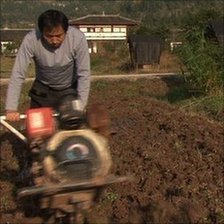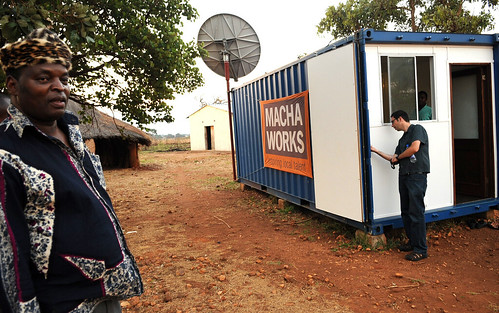IFC, a member of the World Bank Group, and the Soros Economic Development Fund have announced they will invested $1.25 million of equity into Esoko, a Ghanaian technology firm. The investment in Esoko will give small holder African farmers and businesses timely crop information that can be shared via text messaging, enabling farmers to increase their incomes.
Esoko’s software takes advantage of rapidly growing mobile-phone usage in Africa. The technology allows farmers affordable and timely access to market information that can help them negotiate better prices and improve the timing of getting their crops to market.
“Our platform was developed by African software engineers here in Accra, Ghana, and has been a totally local, market-driven initiative,” said Esoko CEO Mark Davies. “IFC and SEDF have a strong track record of helping local companies get the funding and advice needed to expand into new regions and markets. With their support we hope to export this African technology all around the world.”
Esoko’s software allows different parties in the agricultural value chain to exchange real-time market information. Farmers receive current demands, prices of crops, and the location of seeds and fertilizers directly on their mobile phones. Businesses can track how their products are used and market themselves to new customers. Associations and governments can share critical information with thousands using a simple bulk-text messaging feature. Esoko’s technology is being used in nine African countries and expanding quickly.
“SEDF’s investment helps break the information barrier for African farmers so they can generate more income,” said Stewart J. Paperin, president of the Soros Economic Development Fund, a nonprofit investment fund that works to alleviate poverty and community deterioration. “A more transparent marketplace enables farmers to negotiate fair prices, improve their timing on getting goods to market, and move between markets to sell products.”
Esoko is also publishing the first commodities indices in Africa, a powerful tool in helping ensure that farmers are fairly compensated for their crops, as formal commodity exchanges are very rare on the continent. The company is initially publishing two indices that provide prices for 12 agriculture commodities in seven markets in Ghana.
“African technology firms are innovating and expanding beyond their domestic markets and we see a great opportunity to help ensure they have the proper financing for long-term growth,” said Kent Lupberger, Global Head of IFC Techonology, Media, and Telecom.
“Esoko is giving people practical tools to improve their lives and lift themselves out of poverty.”


















































